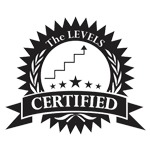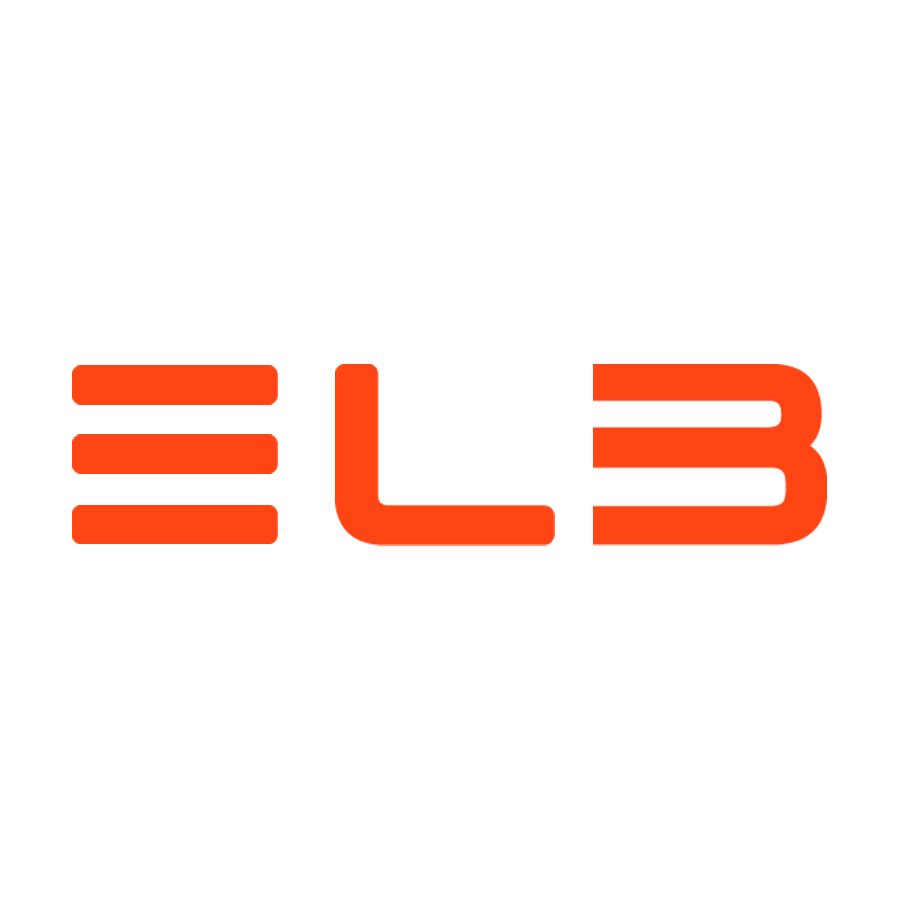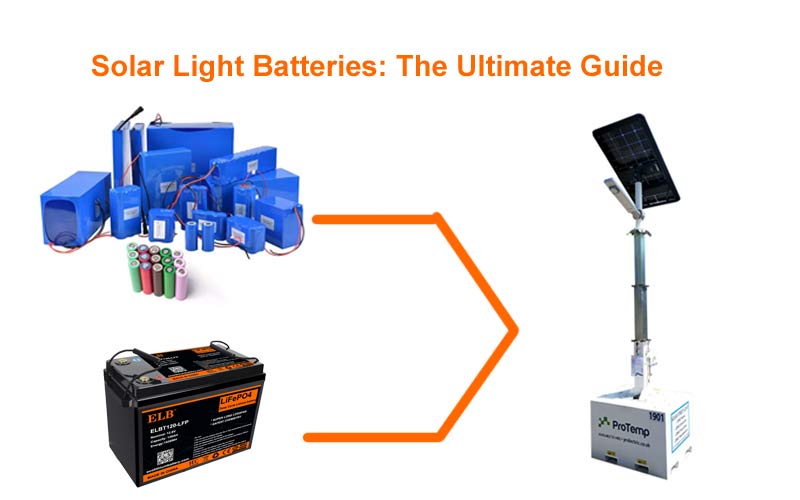
The battery is one of the most important part of solar light, and choosing a high-quality solar light batteries can greatly improve the usage time and experience.
What kinds of batteries that we can use for the solar light? And which battery is the best choice? This chapter will take you to learn more.
Solar light batteries fundamentals
Types
Lead Acid batteries
Lead-acid batteries are one of the most common types of batteries used for solar light. They are an affordable option with a lower initial cost and can also handle the everyday use of solar light. However, it is also because the lead-acid technology has been developed to the end that its energy density is low and its lifespan is poor.
Advantages: The price is the cheapest among all batteries under the premise of the same capacity.
Disadvantages: The volume is larger than ordinary batteries, and the weight is more than twice that of other batteries. The lifespan is only 300-500 times. When the battery is empty of water or acid, it is necessary to actively add water and acid frequently.
Lithium ion Battery
Lithium-ion batteries are one of the most common batteries in solar light. Most lithium batteries are assembled with 18650 cells. Because there are many manufacturers producing 18650 cells, including Panasonic, Sony, LG and other well-known manufacturers, the price is relatively affordable. accept. The cycle life is generally 500 to 1000 times. Cilck here to get more details about our 18650 cells.
Advantages: high specific energy, fast charging. Its deep cycle times are about 800-1000 times, and its life is twice that of lead-acid batteries. But the volume and weight are only half that of lead-acid batteries. Low temperature resistance is very good, very suitable for use in low temperature areas.
Disadvantages: poor high temperature resistance. Its internal structure is relatively stable.
Lithium Iron Phosphate Battery
LiFePO4 batteries are popular in the market due to their extremely long cycle life and high safety. In addition, because the raw materials do not contain precious metal elements, the price is relatively cheap. The cycle life can reach 2000~4000 times. (More details, Please see our article: LFP Vs NMC lithium Battery: Complete Comparison Guide)
Advantages: high energy density, maintenance-free, no memory effect, small size, fast charging, long life. The number of deep cycle charging is generally 2000-6000 times. A set of lithium iron phosphate batteries are generally used normally. It can be used for 8-10 years. High temperature resistance can be used in the environment of -20℃-70℃, and the working temperature range is wide.
It has stable structure and electrochemical properties, and will not burn and explode. It is still very safe under special conditions such as extrusion and acupuncture.
Disadvantages: The price is the highest under the premise of the same capacity.
Recommend solar light batteries
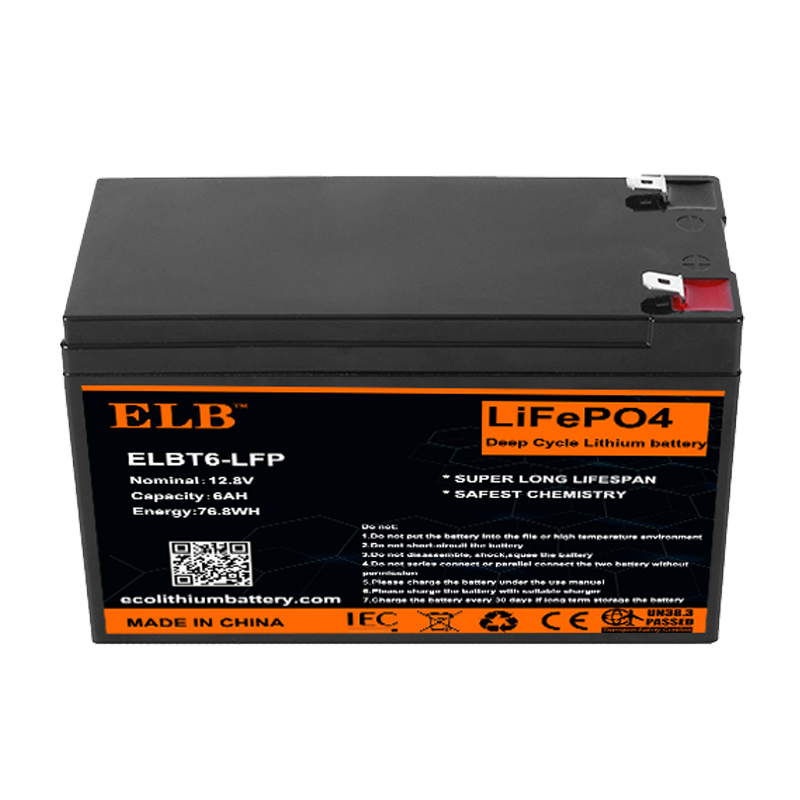
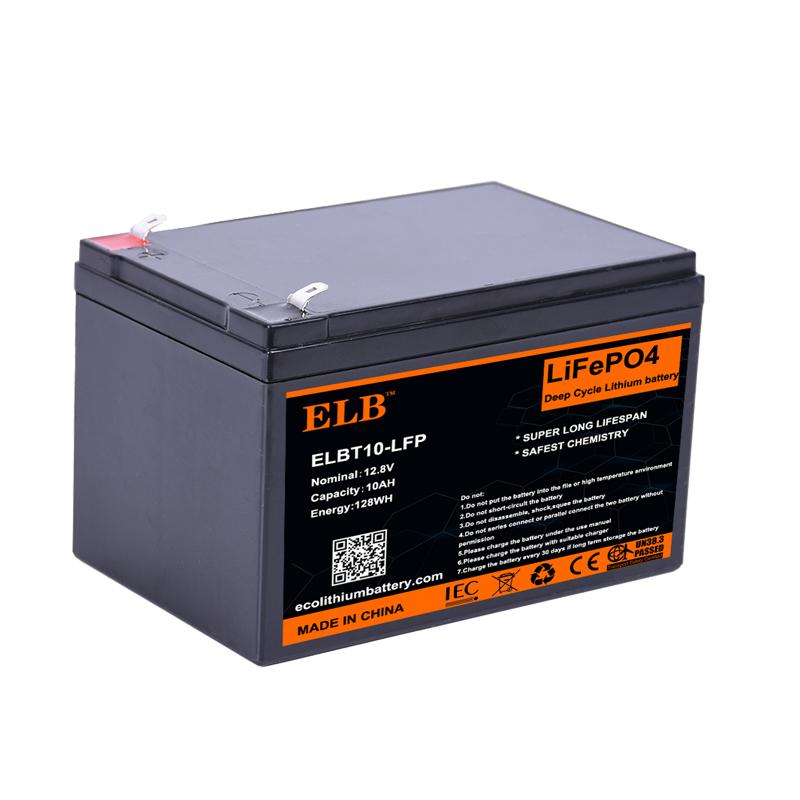
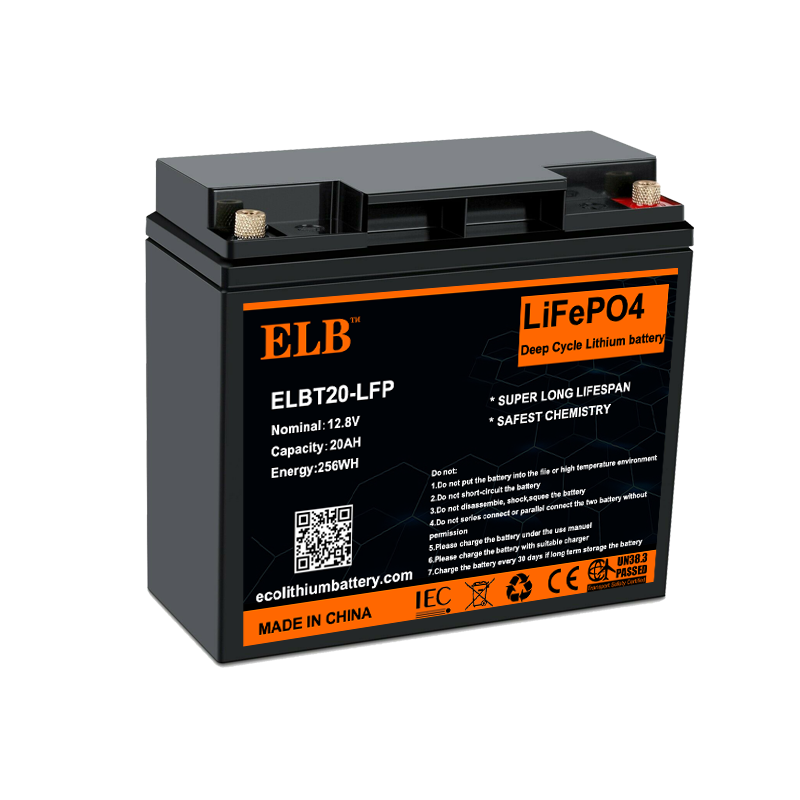
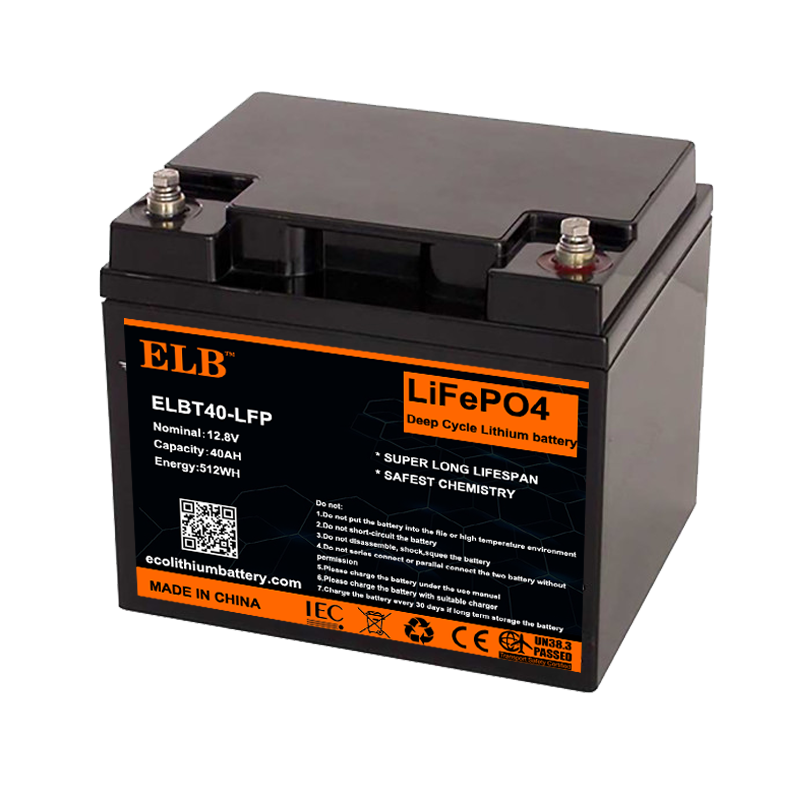
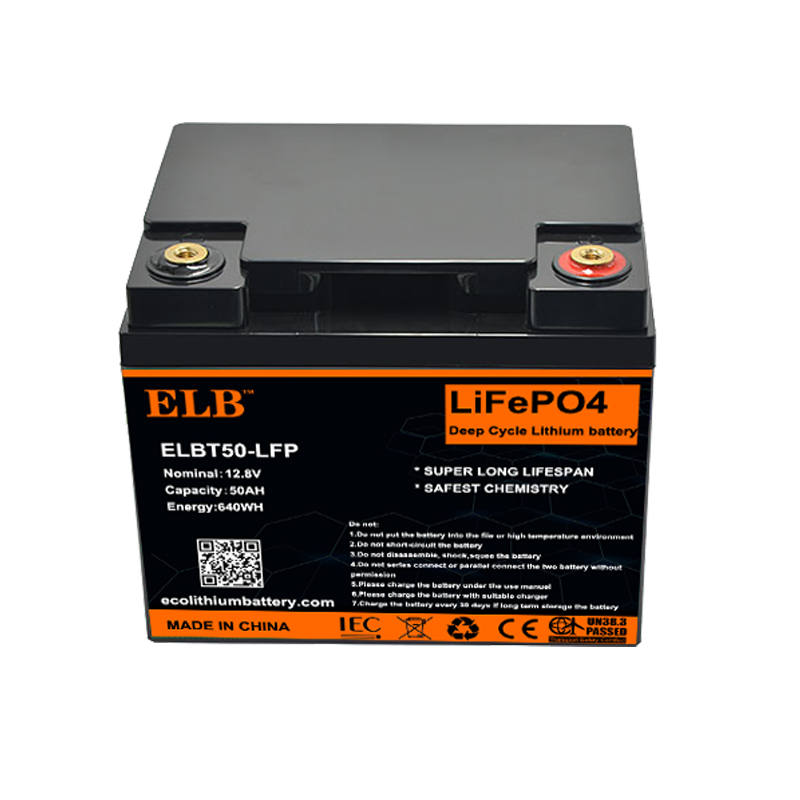
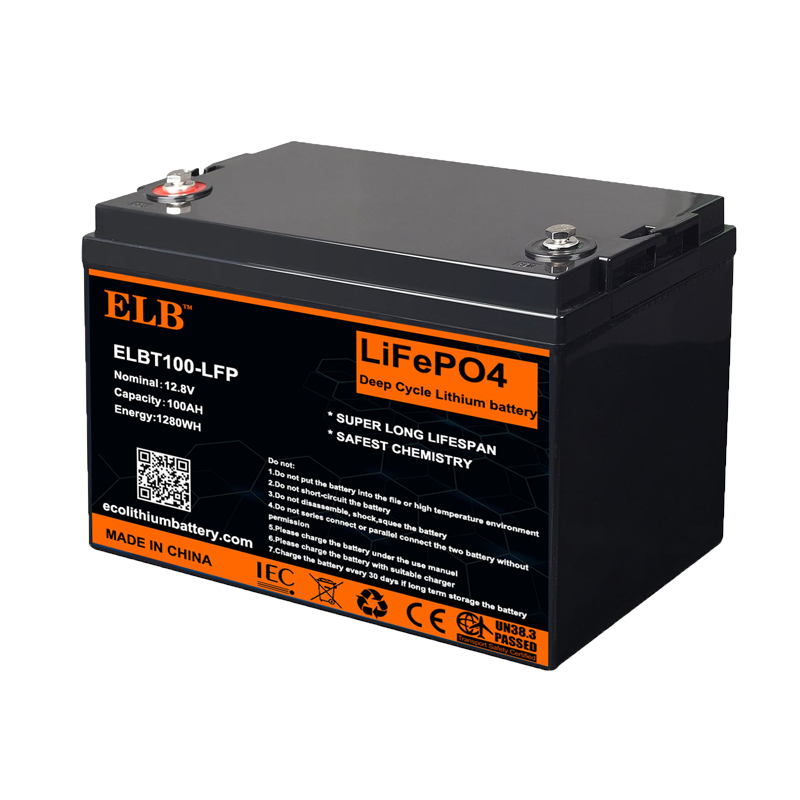
Why lithium battery better than lead Acid batteries?
Light Weight
Lithium ion solar light batteries are the latest technology, and solar light battery manufacturers especially put effort into reducing their weight. Lightweight is the reason you will not face any problem while replacing them, maintaining your cart, or even cleaning it after use. That’s why they allow a smooth run of your solar light and enhance your experience in the ground. In contrast, lead-acid batteries are heavier and cause issues while replacing your solar light battery. This heaviness of lead-acid batteries will not only make your experience
Longer Life
Lead-acid batteries are notorious for their short lives, especially when used in solar light. It’s common to see users replacing their battery pack after every 3-5 years only, whereas the lithium ion solar light batteries can easily last for 6-10 years.
No Memory Effect
One of the biggest problems with lead-acid batteries is that they suffer from a so-called ‘memory effect.’ This means that if you don’t fully discharge them before recharging, they will gradually lose capacity. Lithium-ion batteries don’t have this problem, and you can top them up at any time without affecting their performance.
Better Performance
Lead-acid batteries reduce their performance with time due to sulfation caused by repeated charge and discharge cycles. On the other hand, lithium-ion batteries provide high power and deliver excellent performance at any time. Moreover, lithium ion solar light batteries have a longer battery life as compared to lead-acid solar light batteries.
Higher Energy efficiency.
LFP is more efficient than NiCd in two ways.
Self Discharge.
All rechargeable batteries lose charge over time, but with LFP the rate is only 3-5% per month. NiCd can lose 15% in the first 24 hours, falling to 10-20% per month (depending on temperature) after that. The result of this is that the charger in an solar light fitting with NiCd or NiMH batteries is working almost continually, whereas the charger in an LFP circuit is working at low current in short and infrequent bursts.
Charge Efficiency.
Energy is lost in the form of heat during the charging process of any battery. With LFP the charge efficiency is very high, about 95%. With NiCd the charge efficiency is also very high, but only in the earlier stages of charging. Once the battery reaches 70% capacity heat starts to be generated and the charging efficiency falls to c 85%. This is significant because in normal use a NiCd battery in an solar light fitting is being continually trickle-charged to keep it at near 100% capacity.
High Depth of Discharge
The term “Depth of Discharge” refers to the available capacity used in a single charge. For instance, the depth of discharge will be 50% if you consume half of your battery capacity. Using batteries beyond that point without recharging affects the performance and shortens the lifespan.
High Number of Cycles
Generally, the lifetime of solar light batteries is not measured in years but in cycles. A charge cycle is equal to a one-time complete charge and discharge, and every battery has a specific number of cycles before dying.
Lead-acid batteries for solar light are not so convenient because of a smaller number of cycles between 500 to 1000. After that, the battery would start creating problems, and you have to replace it. On the contrary, lithium ion solar light batteries operate between 2000-6000 cycles which is way more than the other batteries. Compare with lead-acid batteries, lithium-ion batteries provide higher power output, which is advantageous in the long run.
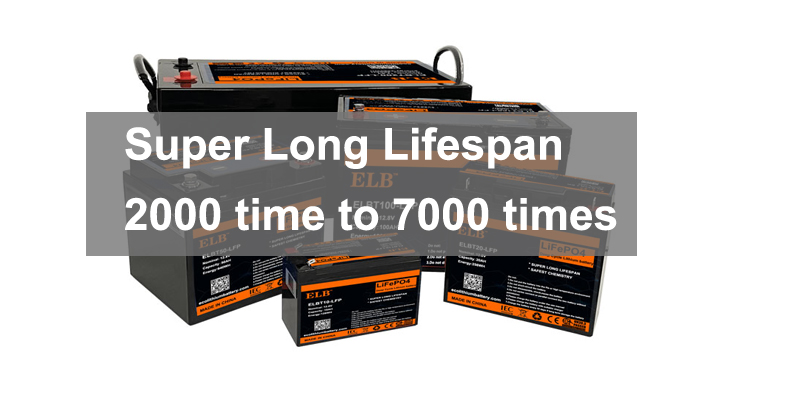
Maintenance Free
The best thing about lithium ion solar light batteries is their maintenance-free manufacturing. Since they are completely sealed compared to lead-acid, you don’t need to worry about regular maintenance. All you need to do is keep them clean and dry and make sure that the terminals are free of corrosion. This can be tiresome for users who are constantly busy with work.
Eevironmentally Friendly
Lithium battery
Lithium-ion batteries do not contain any heavy metals and rare metals (nickel-metal hydride batteries require rare metals), non-toxic (SGS certified), non-polluting, comply with European RoHS regulations, and are green batteries.
However, Cadmium is highly toxic. Cadmium is highly toxic to almost all animals and many plants. It is also very persistent in the environment, being not easily combined with other elements that would render it harmless. NiCd batteries therefore have to be recycled with great care. LFP batteries must also be recycled, but the materials used are inherently less harmful than those used in NiCd and NiMH batteries.
Cadmium has a limited future use. Now that superior alternatives to cadmium are available for use in batteries it is to be expected that the RoHS directive will be amended to eliminate the exemption that has been allowed till now (2020).
How long do solar light batteries last?
The lifespan of your new solar light batteries will depend on how you use it and over what course of time.
Also the battery type are important that we talked before.
In general, you should be able to get years of life from your new solar light battery.
However, all batteries have a lifespan. We expect our ELB lithium ion battery to last approximately 2000-7000 cycles until they should be replaced.
Where I can find the solar light batteries manufacturer?
ELB has been designing and manufacturing custom battery packs for a variety of solar lights over 10 years.
Please contact with ELB directly to get the quotation and customized solutions for your solar light batteries. Or you can visit ELB product centerdirectly.
Can I have a customized solar light batteries for my solar light?
Ofcause, please tell us below technical factor, then we can provide solutions.
- The dimension of battery space
- Battery voltage requirement
- Battery capacity requirement
- Total load power of the solar light


